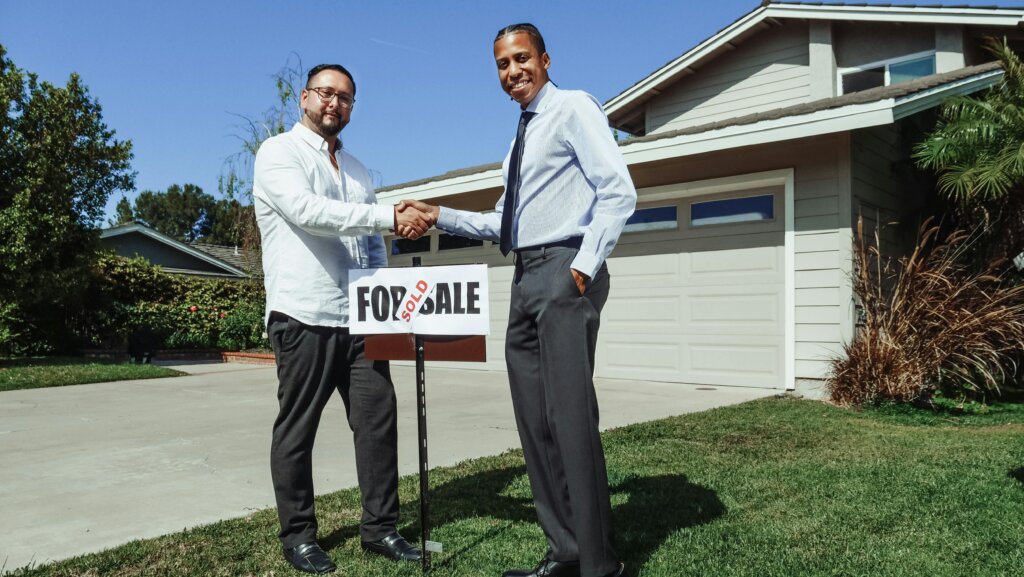Introduction
In the real estate market, homeowners often face a tough decision—whether to sell their house to access the equity tied up in their property or adapt to a new living situation while holding onto the comfort and familiarity of their current home.
For homeowners, their house is more than just a financial asset; it holds cherished memories and emotional connections. Finding a balance between the necessity of selling and the desire to maintain the feeling of home requires innovative solutions that help them move forward smoothly without losing that sense of belonging.
Unlocking home equity is essential for homeowners seeking to cover expenses like retirement, education, or home upgrades. Selling their property allows them to tap into the equity accumulated through years of mortgage payments and property value appreciation, giving them flexibility and security for the future. Nonetheless, the selling process can be intimidating, especially when it means saying goodbye to a place that has been a sanctuary for long.
Thankfully, options are available, such as sale-leaseback arrangements, partial home reversion plans, and shared equity agreements that empower your home-selling process while continuing to reside in them.
Let’s explore in detail each creative solution that enables homeowners to sell their house while still living in it and examine the complexities, advantages, and factors to consider for each choice.
1. Stay For Free For a Short Time

One strategy for homeowners looking to sell their property while still living in it involves negotiating a short-term stay-for-free arrangement as part of the sale agreement. In this scenario, home sellers like yourself negotiate with the prospective buyer to remain in the property rent-free for a specified period after the sale is finalized.
Benefits of Post-Sale Occupancy
- Transitional Breathing Space
This short-term arrangement offers a grace period to prepare for your next move without the immediate pressure to vacate. It provides valuable time to organize belongings, coordinate logistics, and make necessary arrangements for your new living situation.
- Financial Relief
By staying in the property without paying rent for a short period, you can also save on closing costs and allocate funds toward other expenses associated with the transition.
Key Considerations
- Thorough Valuation
Before finalizing the purchase agreement, you must thoroughly evaluate your property to determine its fair market value. This ensures that both parties understand the property’s worth and can negotiate terms accordingly.
- Transparent Occupancy Terms
To avoid any misunderstandings or disputes, outline the terms of occupancy in detail as the sale closes. This includes specifying the duration of the post-sale occupancy period and the responsibilities of both parties during this phase.
- Legal Formalization
Ensure the post-sale occupancy agreement is appropriately documented and reflected in the sale contract to safeguard your interests. This formalization protects you and the buyer, regardless of whether the buyer is a family member, a real estate investor, or a cash buyer.
Remember, negotiating a stay-for-free arrangement as part of the sale agreement allows for a smooth transition while still living in your home for a short period even after it’s sold. This gives you flexibility and some financial ease, making it appealing to home sellers, especially when dealing with cash home buyers in Texas.
2. Leaseback Option

A sale-leaseback agreement is a strategic arrangement where you sell your home and then lease it back from the new owner, allowing you to continue living in it as a renter. This option is particularly appealing in a seller’s market, enabling you to capitalize on your home’s current market value while remaining in your familiar surroundings.
Benefits of a Leaseback Arrangement
- Immediate Access to Equity
By selling your home, you unlock its equity, providing immediate financial benefits that can be used for various needs, such as investments, paying rent, or funding your next home purchase.
- Continuity
This arrangement allows you to continue living in your beloved home while you assess future steps or need more time to find a new place.
Key Elements of the Leaseback Agreement
- Detailed Lease Terms
The leaseback agreement must include comprehensive details on the lease duration, monthly rent, and the responsibilities of the renter and the home buyers. This ensures clarity and prevents future disputes.
- Fair Lease entitlement
Careful negotiation is essential to ensure the sale-leaseback process is fair and favorable. This includes agreeing on a reasonable rental rate that reflects market rates and considering any maintenance responsibilities or property management expectations.
- Understanding Your New Role
Your role and responsibilities as a renter will change. You’ll need to adapt to being a tenant under the new owner’s property management and follow the terms outlined in the lease agreement.
Practical Considerations
- Future Plans
Assess your long-term plans and financial situation. Leaseback agreements can provide short-term flexibility but may not be the best solution if you plan to move sooner rather than later.
3. Home Reversion

Home reversion is a long-term solution that allows you to sell all or part of your property in exchange for a lifetime lease term. Typically, this involves selling your home at a discounted rate below its full market value. In return, you gain the right to live in your home as your primary residence for the rest of your life without the burden of mortgage payments or the need to relocate.
Benefits of Home Reversion:
- Lifetime Security
One of the primary advantages of home reversion is the ability to remain in your home for life. This arrangement provides peace of mind, knowing you won’t have to relocate and can continue living in familiar surroundings.
- Financial Relief
The down payment can provide immediate financial benefits through a lump sum or regular installments. You can use this financial support to cover living expenses, healthcare costs, or a new home purchase.
Key Considerations
- Impact on Home Equity
Home reversion typically involves selling your property below its full market value. This means you are trading potential future equity for the security and immediate financial benefits through the reversion plan.
- Valuation of Property
Ensure you get a fair assessment of your home’s worth, even if the purchase price is below market value. This is vital for determining the terms of the reversion agreement.
- Understanding Terms
The new owner, often a real estate investor, will own part or all of your home but will allow you to live there rent-free. It’s crucial to have a clear, legally binding agreement outlining your rights and the terms of your residency.
Legal and Financial Advice
- Real Estate Attorney/ Real Estate Agent
Given the complexity of home reversion agreements, seek legal and financial advice from an experienced real estate attorney and agents who can help you understand the implications fully, ensuring that the terms are favorable and protect your interests.
- Property Taxes
Consider comparing home reversion to other options, such as sale-leaseback or reverse mortgages, to determine which best suits your financial obligations and aligns with your property tax arrangements.
Know that in competitive real estate markets, for instance, companies that buy houses in Texas often offer home reversion plans and can guide you to prospective buyers willing to enter into such agreements.
4. Sell and Rent Back

The sell and rent back option allows homeowners to sell their homes to buyers and continue living in the property by signing a rental agreement. This arrangement offers a practical solution for those needing to unlock their home equity while maintaining their current living situation.
How Sell and Rent Back Works
- Formal Agreement
Unlike informal agreements, a sell-and-rent-back arrangement involves a formal process in which a homeowner sells their house to a buyer who then becomes their landlord. You will sign a rental agreement detailing the terms of your tenancy, including the rent amount and duration.
- Guaranteed Tenant for Investors
Real estate investors find this arrangement attractive because they get a guaranteed tenant. As the former homeowner, you are familiar with the property and likely to be a reliable renter, reducing the risk for the real estate investor.
- Financial Benefits
Selling your home and renting it back allows you to access the equity tied up in your property. This can provide funds for various needs, such as paying off debts, investing in new opportunities, or covering unexpected expenses.
Key Considerations
- Rental Terms
Always negotiate favorable rental payments that suit your financial freedom and long-term plans. Ensure that the rental agreement is clear about rent increases, maintenance responsibilities, and the duration of the lease.
- Find the Right Buyer
Look for potential buyers who are reputable and have experience with sell-and-rent-back agreements. This will significantly increase your chances of landing a favorable agreement.
5. Equity Release

Equity release is a financial strategy that allows you to access the equity in your home without the need to move out. This option is particularly beneficial for older homeowners who want to unlock cash tied up in their property while continuing to live there.
Types of Equity Release
- Lifetime Mortgage
You take out a mortgage secured on your property without transferring ownership. Interest is added to the loan amount and repaid when the property is sold, typically upon death or when you move into long-term care.
- Home Reversion Scheme
You sell part or all of your home to a reversion company in exchange for a lump sum or regular payments. You retain the right to live in the property rent-free or for a nominal rent until you pass away. However, the sale price is below trade value.
Eligibility and Amount
The amount you can release depends on several factors, including your age, the value of your home, and the percentage of equity you want to unlock. Generally, the older you are, the more you can borrow or sell.
Financial Flexibility
- Immediate Funds
Equity release provides immediate access to funds, which can be used for various purposes such as home improvements, healthcare expenses, or simply enhancing your quality of life.
- No Monthly Payments
With a lifetime mortgage, you don’t have to make any monthly repayments as the loan is repaid from the sale of the property in the future.
- Continued Residency
You continue to live in your home, maintaining your lifestyle and comfort. This arrangement allows you to stay in familiar surroundings without the stress and upheaval of moving.
Key Considerations
- Impact on Inheritance
Releasing equity will reduce the value of your estate and the amount that can be left to your heirs. Therefore, discuss this with your family and consider the long-term implications.
- Costs and Fees
Be aware of the costs involved, including arrangement fees, legal fees, and potential early repayment charges. Understanding all the financial aspects before proceeding is a must.
Equity release is a significant financial decision, and it’s best to seek expert advice from real estate agents to determine whether it’s the right choice for your circumstances.
6. Reverse Mortgage

A reverse mortgage is a financial product designed specifically for older homeowners to access the equity in their homes without selling the property. This option allows you to receive payments based on the equity you have built up, providing financial support while you continue to live in your home.
Eligibility
- Typically, it is available to homeowners aged 62 and older.
- You must have significant equity in your home, often at least 50% of the home’s value.
- The home must be your primary residence.
Payment Options
- Receive the entire loan amount at once.
- Receive a regular income stream for as long as you live in the home.
- Withdraw funds as needed.
No Monthly Repayments
Unlike a traditional mortgage, you don’t have to make monthly repayments. The loan is repaid when you sell the home, move out permanently, or pass away.
Staying in Your Home
You retain ownership of your home and continue living there.
Key Considerations
- Costs and Fees
Reverse mortgages come with various costs, including origination, interest, and servicing fees. Contemplate all associated costs to determine if this option is financially viable.
- Loan Balance Growth
The loan balance increases over time as interest and fees accumulate. This can significantly reduce the remaining equity in your home over the long term.
- Requirements and Obligations
You must maintain the home in good condition, pay property taxes, and keep up with homeowner’s insurance. Failure to meet these obligations can result in the loan being called due.
Conclusion

Unlocking the equity in your home while staying in your beloved space is no longer just a dream—it’s a reality with the right strategy. Whether you opt for a quick cash sale or a convenient leaseback arrangement, you have multiple options to secure your financial future without the hassle of moving out immediately.
Imagine reaping the financial rewards of your home’s value surge without the stress of finding a new place. Whether you’re facing a life transition, looking to avoid foreclosure, or simply wanting to capitalize on your investment, these innovative solutions offer the perfect blend of stability and monetary gain.
Don’t let traditional home-selling methods tie you down. Explore more innovative options with A-List Properties and choose the path that aligns with your goals.

Zach Shelley
Zach Shelley is a seasoned real estate investor with a diverse network spanning across the nation. As the founder of his own real estate venture, Zach is committed to offering innovative solutions to homeowners facing various real estate challenges.. Through his dedication and strategic approach, Zach continues to make a significant impact in the real estate industry, providing homeowners with alternative pathways to navigate their property transactions.



